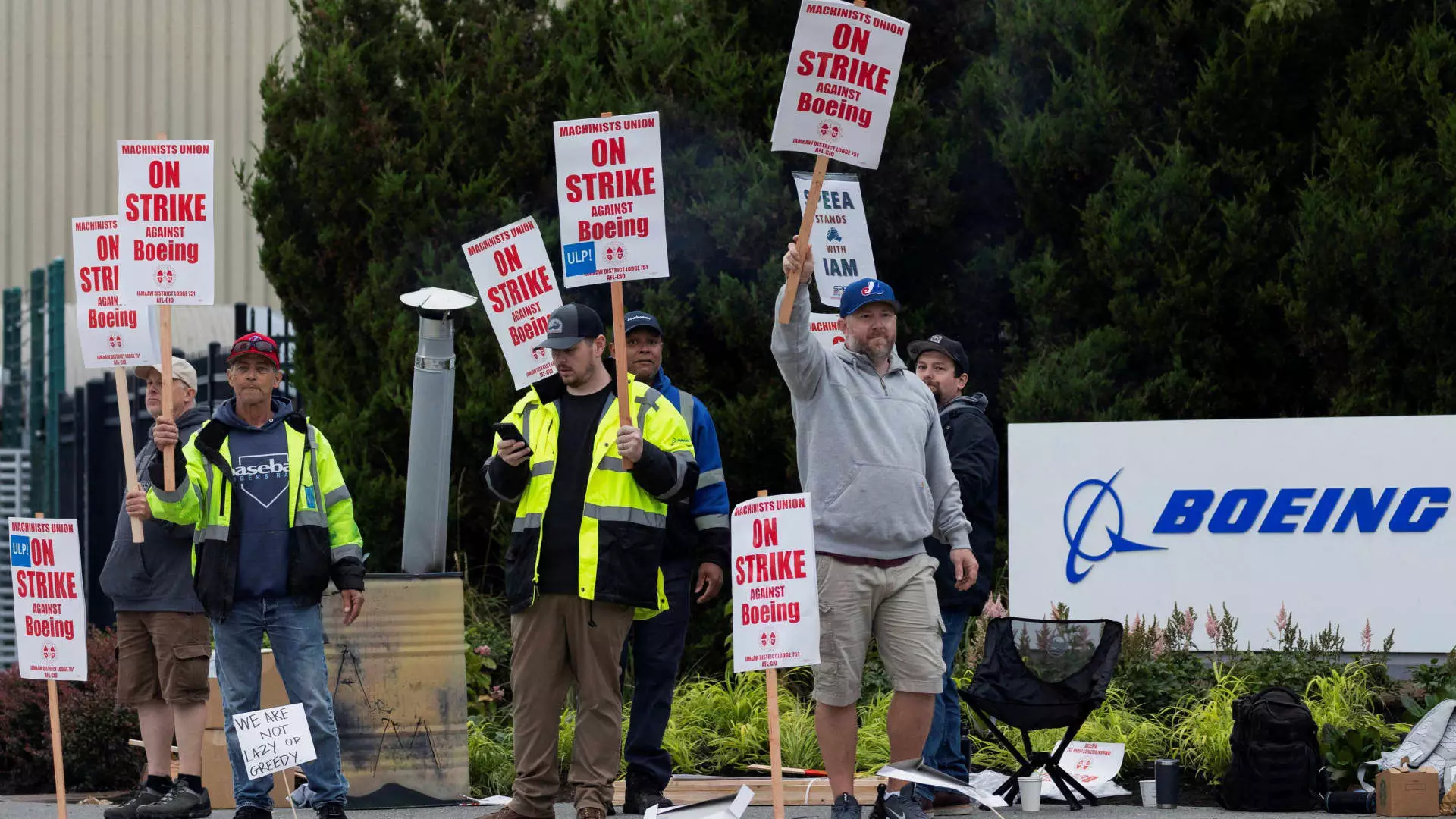In Renton, Washington, tensions are escalating as the Boeing Company confronts a substantial workforce strike, inciting repercussions that extend beyond the assembly lines. As machinists continue to demand higher wages and better working conditions, the strike—which has now entered its second week—could prove catastrophic for a company already grappling with staggering debts exceeding $60 billion. Financial analysts have voiced concerns that a prolonged strike could warrant a downgrade to Boeing’s credit ratings, compounding its borrowing costs at an inopportune moment. Indeed, Boeing has already bled $8 billion this year alone, fueled by operational snafus that raised serious ethical and operational questions about their management practices.
The strike has halted the production lines for Boeing’s widely popular jets, prompting a ripple effect through its extensive supplier network—a crucial aspect of Boeing’s operational model. As assembly comes to a standstill, companies dependent on delivering parts find themselves in precarious positions, with many suppliers already receiving notifications to cease shipments. This disruption jeopardizes not only Boeing’s financial recovery but also the livelihoods of countless workers across the broader aerospace industry.
Despite the grim financial backdrop, the striking workers display unwavering resilience, preparing for a potentially drawn-out battle. At the local union headquarters, they are proactively organizing for sustenance and support; from pallet loads of bottled water to homemade meals for picketers, the spirit of solidarity prevails. Machinists like Jake Meyer, who has had to contemplate taking on side gigs in food delivery and furniture moving, illustrate the harsh realities many face. Living costs in Seattle, where the median home price skyrocketed approximately 142% over the last decade, pose a significant barrier to economic stability, making the demand for fair wages more pressing than ever.
Many union members have expressed pride in their craftsmanship and dedication to building quality aircraft, revealing a heartfelt connection to their work that complicates the stark financial realities. A worker, retaining anonymity, expressed confidence in his ability to endure the strike, underscoring a collective determination to contest for better recognition of their efforts. The looming expiration of health benefits further complicates the stakes, as workers prepare to adjust their strategies for financial survival.
Negotiation rounds between Boeing’s management, led by newly appointed CEO Kelly Ortberg, and union representatives have been fraught with disappointment. Although Boeing’s recent proposal included a 25% wage increase over four years—initially supported by the union’s local leadership—the strikers seek compensation that aligns more closely with their initial demand for a 40% salary bump, alongside bonuses and restored pensions.
Union leadership has been forthright about their concerns regarding the lack of substantive progress in these negotiations. In correspondence with members, they stated they remained committed to prioritizing issues raised in recent surveys but expressed disappointment at Boeing’s insufficient responses. Ortberg, recognizing the gravity of the situation, enacted a series of cost-reduction measures, including furloughing thousands of employees and implementing hiring freezes. These decisions indicate the overarching pressure Boeing faces to secure a swift resolution while mitigating risks associated with ongoing labor unrest.
The strike stands as part of a larger trend wherein labor movements across various sectors have gained momentum. Recent labor battles in industries like entertainment, automotive, and aviation reveal a collective assertion of rights among workers seeking increased compensation amid soaring living costs. The Biden administration has actively encouraged a sidelined resolution, with Transportation Secretary Pete Buttigieg acknowledging the complexities inherent in balancing employee demands with corporate interests.
Amidst this broader labor landscape, Boeing finds itself at a critical juncture. Just as the company struggles to regain its footing post-pandemic, it contends with a tight labor market that has made recruiting skilled workers increasingly challenging. The shortage of technical workers has become a significant headache for aerospace manufacturers, who face an uphill battle in attracting and retaining the experienced labor force essential for their operations.
The Boeing machinists’ strike encapsulates the complex interplay between worker rights and corporate resilience in the face of economic adversity. As both sides grapple with their respective challenges, the outcome of this struggle will have lasting consequences not only for Boeing’s operational viability but also for the broader narrative around labor relations in America. Striking a balance between fair compensation and maintaining a competitive edge in an ever-evolving market will be no small feat. However, as demonstrated by the machinists’ steadfast resolve, the heart of any company lies with its workforce—one that is increasingly unwilling to compromise on its value.

